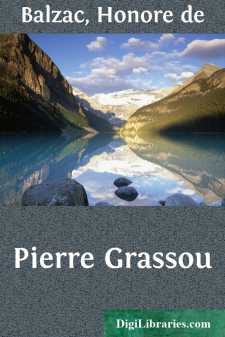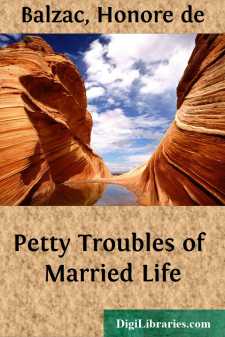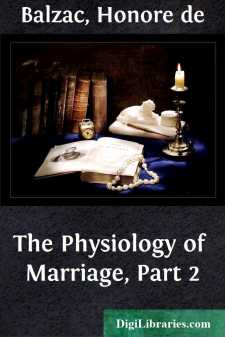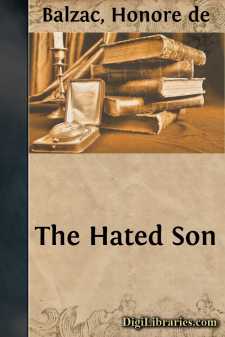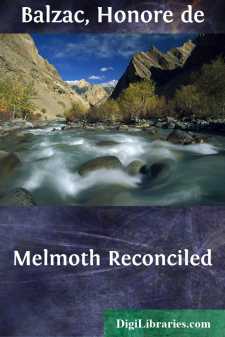Categories
- Antiques & Collectibles 13
- Architecture 36
- Art 48
- Bibles 22
- Biography & Autobiography 813
- Body, Mind & Spirit 142
- Business & Economics 28
- Children's Books 17
- Children's Fiction 14
- Computers 4
- Cooking 94
- Crafts & Hobbies 4
- Drama 346
- Education 46
- Family & Relationships 57
- Fiction 11829
- Games 19
- Gardening 17
- Health & Fitness 34
- History 1377
- House & Home 1
- Humor 147
- Juvenile Fiction 1873
- Juvenile Nonfiction 202
- Language Arts & Disciplines 88
- Law 16
- Literary Collections 686
- Literary Criticism 179
- Mathematics 13
- Medical 41
- Music 40
- Nature 179
- Non-Classifiable 1768
- Performing Arts 7
- Periodicals 1453
- Philosophy 64
- Photography 2
- Poetry 896
- Political Science 203
- Psychology 42
- Reference 154
- Religion 513
- Science 126
- Self-Help 84
- Social Science 81
- Sports & Recreation 34
- Study Aids 3
- Technology & Engineering 59
- Transportation 23
- Travel 463
- True Crime 29
Pierre Grassou
by: Honore de Balzac
Categories:
Description:
Excerpt
PIERRE GRASSOU
Whenever you have gone to take a serious look at the exhibition of works of sculpture and painting, such as it has been since the revolution of 1830, have you not been seized by a sense of uneasiness, weariness, sadness, at the sight of those long and over-crowded galleries? Since 1830, the true Salon no longer exists. The Louvre has again been taken by assault,—this time by a populace of artists who have maintained themselves in it.
In other days, when the Salon presented only the choicest works of art, it conferred the highest honor on the creations there exhibited. Among the two hundred selected paintings, the public could still choose: a crown was awarded to the masterpiece by hands unseen. Eager, impassioned discussions arose about some picture. The abuse showered on Delacroix, on Ingres, contributed no less to their fame than the praises and fanaticism of their adherents. To-day, neither the crowd nor the criticism grows impassioned about the products of that bazaar. Forced to make the selection for itself, which in former days the examining jury made for it, the attention of the public is soon wearied and the exhibition closes. Before the year 1817 the pictures admitted never went beyond the first two columns of the long gallery of the old masters; but in that year, to the great astonishment of the public, they filled the whole space. Historical, high-art, genre paintings, easel pictures, landscapes, flowers, animals, and water-colors,—these eight specialties could surely not offer more than twenty pictures in one year worthy of the eyes of the public, which, indeed, cannot give its attention to a greater number of such works. The more the number of artists increases, the more careful and exacting the jury of admission ought to be.
The true character of the Salon was lost as soon as it spread along the galleries. The Salon should have remained within fixed limits of inflexible proportions, where each distinct specialty could show its masterpieces only. An experience of ten years has shown the excellence of the former institution. Now, instead of a tournament, we have a mob; instead of a noble exhibition, we have a tumultuous bazaar; instead of a choice selection we have a chaotic mass. What is the result? A great artist is swamped. Decamps' "Turkish Cafe," "Children at a Fountain," "Joseph," and "The Torture," would have redounded far more to his credit if the four pictures had been exhibited in the great Salon with the hundred good pictures of that year, than his twenty pictures could, among three thousand others, jumbled together in six galleries.
By some strange contradiction, ever since the doors are open to every one there has been much talk of unknown and unrecognized genius. When, twelve years earlier, Ingres' "Courtesan," and that of Sigalon, the "Medusa" of Gericault, the "Massacre of Scio" by Delacroix, the "Baptism of Henri IV." by Eugene Deveria, admitted by celebrated artists accused of jealousy, showed the world, in spite of the denials of criticism, that young and vigorous palettes existed, no such complaint was made....


